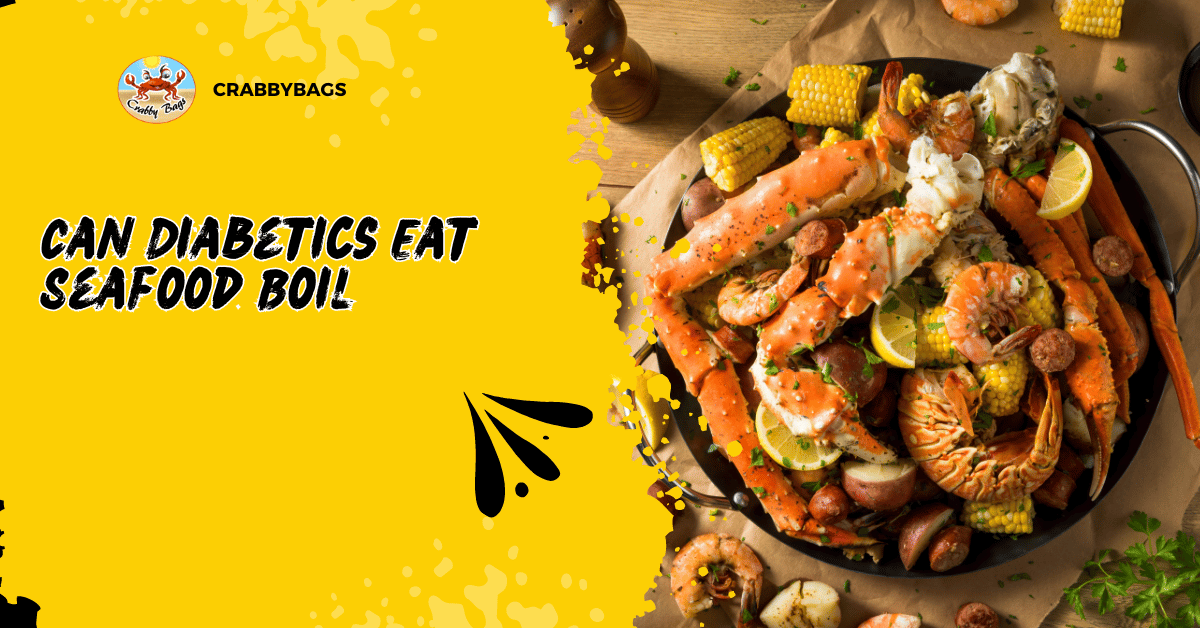
Can Diabetics Eat Seafood Boil
|
|
Time to read 4 min
|
|
Time to read 4 min
For many food enthusiasts, a seafood boil represents the pinnacle of indulgence - a feast of succulent shellfish, aromatic spices, and communal dining.
But for those managing diabetes: can people eat seafood without compromising their health? This comprehensive guide delves into the intricacies of seafood boils and their place in a diabetic diet.
It offers insights and practical advice for those looking to enjoy this culinary delight while maintaining blood sugar control.
Before we discuss the specifics of seafood boils, it's crucial to understand the relationship between diabetes and diet. Diabetes is a chronic condition that affects how the body processes glucose (sugar), leading to elevated blood sugar levels.
Effective management of diabetes heavily relies on dietary choices and portion control.
Key dietary considerations for diabetics include:
With these principles in mind, let's examine how seafood boils fit into a diabetic diet.
A typical seafood boil is a medley of flavours and textures, usually consisting of shellfish (such as shrimp, crab, and crawfish), corn on the cob, potatoes, and various seasonings. To understand its impact on a diabetic diet, we need to break down its nutritional components.
Shellfish, the star of any seafood boil, offers several nutritional benefits. It's high in protein, low in carbohydrates, and rich in omega-3 fatty acids. Additionally, shellfish provides essential vitamins and minerals such as B12, D, zinc, and selenium.
Corn on the cob, a common addition to seafood boils, presents a more complex nutritional profile for people with diabetes. While it contains fibre that can help slow sugar absorption, it's also moderate to high in carbohydrates.
The same applies to potatoes, which are high in carbohydrates but provide fibre and essential nutrients like potassium and vitamin C.
The seasonings used in seafood boils often contribute significant sodium content, an essential consideration for people with diabetes who may need to monitor their salt intake.
When prepared thoughtfully, seafood can be an excellent addition to a diabetic diet. Here's why:
These nutritional attributes make seafood valuable to a balanced diabetic meal plan. However, the preparation method in a seafood boil introduces additional factors to consider.
While seafood is generally beneficial for diabetics, traditional seafood boils have some considerations. The high sodium content from seasoning blends can be problematic for diabetics, who often need to monitor their salt intake due to the increased risk of hypertension.
Many seafood boil recipes use butter or oil in preparation, increasing calorie content. If consumed in excess, this could potentially lead to weight gain, a factor that can complicate diabetes management.
Perhaps the most significant concern for diabetics is the inclusion of carbohydrate-rich sides like corn and potatoes. If not properly accounted for in the overall meal plan, these starchy components can cause blood sugar spikes.
With some mindful adjustments, people with diabetes can safely enjoy seafood boils. Here are some strategies to consider:
Implementing these strategies can help you better manage your blood sugar while still enjoying the flavours of a seafood boil.
To make seafood boils more diabetic-friendly, consider these alternatives:
Replace high-carb vegetables with low-carb options like cauliflower, broccoli, zucchini, or bell peppers. These vegetables provide essential nutrients and fibre without significantly impacting blood sugar levels.
Experiment with different cooking methods. Steaming or grilling seafood instead of boiling it in a seasoned broth can reduce sodium and calorie content. An air fryer can provide a crispy texture without added oils.
Create your seasoning blend using herbs and spices without added sugars or excess salt. Lemon, garlic, and fresh herbs can add flavour without calories. This approach allows you to control sodium while enjoying a flavorful meal.
Can people with diabetes eat seafood boil? The answer is a qualified yes. With mindful preparation, portion control, and consideration of individual health needs, seafood boils can be incorporated into a diabetic diet. The high-quality protein and beneficial nutrients in seafood make it a valuable addition to meals, while modifications to traditional recipes can address concerns about carbohydrates and sodium.
Remember, diabetes management is highly individual. What works for one person may only work for one person. It's crucial to monitor your blood glucose levels and pay attention to how different foods affect your body. Consult your healthcare provider or a registered dietitian for personalized advice on incorporating seafood boils into your diabetic meal plan.
By making informed choices and enjoying seafood boils in moderation, individuals with diabetes can savour this beloved dish while maintaining their health goals. With the right approach, a seafood boil can be both a delicious treat and a part of a balanced diabetic diet.




